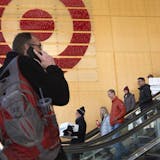You might, dear baseball fan, have a mental and sensory image of what the sport will look and feel like when it is deemed safe for play to resume: Crowd sounds; ballpark food scents; smiling fans on a sunny day decked out in all manners of Twins jerseys at Target Field.
But the actual near-term return to the resumption of MLB games could look completely different, as outlined in a wide-ranging report from ESPN's Jeff Passan:
Teams sequestered in Arizona playing neutral site games primarily at spring training sites; no fans in the stands; players possibly still practicing social distancing by sitting six feet apart in the stands instead of the dugout; electronic balls and strikes being called so that the home plate umpire isn't too close to the catcher.
Zero ticket revenue, which reportedly makes up a whopping $10 billion every year across 30 MLB teams. But possibly expanded TV revenue if more games can be nationally televised and rights-holders are lured by the prospect of live programming.
In other words: Completely different than the picture in your head.
On one hand, you might be able to watch Twins games as early as late May or early June. On the other hand, it would always be on TV, broadcast from a sterile environment far away — perhaps for the entire 2020 season, or at least deep into it.
Is baseball in some alternative form better than nothing at all? I'm inclined to say it probably is, but this will also test the limits of what defines the experience of watching a game.
Is it primarily defined by what happens between the lines by the players? Or is the entire experience dependent on the interplay between sights, sounds and smells? How much of the tension is derived from the collective atmosphere?



